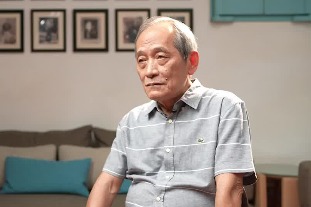The expression of female thought in Mulan
By Jiao Jia | chinadaily.com.cn | Updated: 2020-09-25 10:37

Affected by the COVID-19 epidemic, the film Mulan was launched on Disney's streaming media platform on Sept 4 and released in China on Sept 11 after three delays and one withdrawal. In the 10 days since its release, its box office revenue reached 250 million yuan.
The film directed by New Zealand director Niki Caro features many famous Chinese stars, including Yifei Liu, Gong Li, Donnie Yen and Jet Li. To many people's surprise, this highly anticipated film scored only 4.7 points on Chinese movie review platform Douban after its release. Compared with domestic audiences, foreign audiences have a higher acceptance of Mulan, with a 75 percent rating on Rotten Tomatoes.
Mulan tells the story of the Northern Wei Dynasty (386-534). To resist the invasion of the Northern invaders Rourans, the emperor orders every family within the territory to enlist one male to be into war. Hua Mulan, the eldest daughter of the family, decides to enlist in place of her elderly father.
In the traditional Chinese story, although Mulan is a woman, she takes on a male identity. The development of the story is based on the premise of the conformity of women disguised as men. After the emperor orders each family to send a man into the army, Mulan, in order to protect her father from the war, dresses in military uniform as a man to hide her true identity. In her mind, she has always embodied the ideas and concepts of "loyalty" and "defense of the country" advocated in the traditional Chinese Confucian culture.
However, the live-action version of Mulan adapted by Disney implants the modern female discourse of Disney princess series, influenced by traditional Chinese ethics and morals. Mulan is portrayed as an independent person pursuing individual liberation and realizing self-worth. In the film, Mulan's disguise is not shown as facing the challenges of a sexist environment as a woman. After talking and fighting with the witch played by Gong Li, Mulan takes off her armor, unties her hair, and returns to the battlefield as a woman to fight. This plot transforms the conflict of gender contradictions into a promotion of the character image and the plot of the story, which has the modern flavor of the new feminism in current era.
In addition to the characterization of the main character, I was impressed by the portrayal of the Xian Niang. The prototype of the character Xian Niang is based on the animated version of the eagle whose feathers were burned off. In the live-action version, the Xian Niang is depicted as an animal that can transform into a human being, whom the movie calls a witch, she is strong in martial arts, obedient to the villain Rouran general, and is oppressed by Rouran general.
Xian Niang has the same chi as Mulan, and they have the same power. When they first meet, Xian Niang questions Mulan's truth, and Mulan realizes the truth from this, and then chooses to face her gender honestly and recognize herself as a female power. When they meet for the second time, Xian Niang sends out an invitation to Mulan, hoping that Mulan could join her camp and fight side by side but the invitation is rejected. At the last meeting, Xian Niang is persuaded by Mulan and completely gives up the resistance, and finally dies to protect Mulan.
In the film, the witch forms a counterpoint to Mulan, she is the victim of male power and reluctantly submits to it, but Mulan chooses to resist and proves her worth. From the characterization of Xian Niang to Mulan, we can see the embodiment of current mainstream female thought and the epitome of female progress.
At the end of the film, Mulan gains recognition from everyone by showing her ability and secures a place in the feudal society dominated by men. However, she does not crave power and wealth. Instead, she chooses to go back to her hometown and stay with her family. It can be seen from here that, whether mulan or Xian Niang, what motivates them is not the collectivist mission of making achievements, nor the individual desire to pursue self-worth, but more the yearning for the traditional ideal life of women.
Disney's live-action Mulan tries to integrate the cultural symbols from the East into the Western narrative structure, which not only satisfies the Westerners' view of the oriental culture, but also opens up the oriental cultural market. The expression of female thought is embedded in the female image of the Western mainstream values of personal heroes, which is more in line with the Western audience's taste in a sense.
The author is from the School of Media, Northwest Normal University.
If you have a specific expertise and would like to contribute to China Daily, please contact us at opinion@chinadaily.com.cn , and comment@chinadaily.com.cn
























